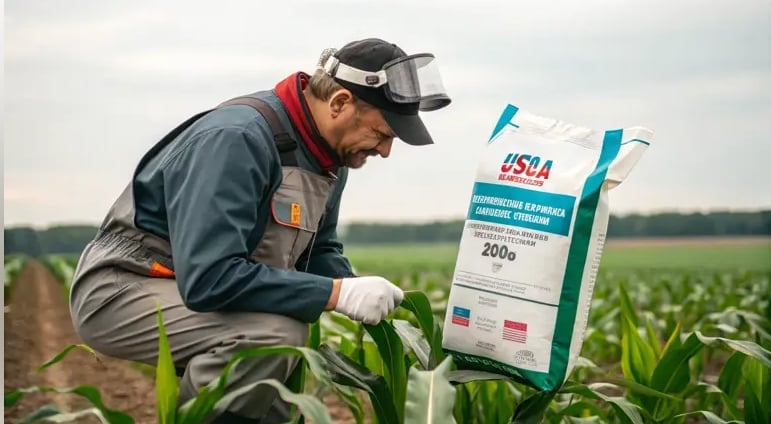December 10, 2025 | 08:57 GMT +7
December 10, 2025 | 08:57 GMT +7
Hotline: 0913.378.918
December 10, 2025 | 08:57 GMT +7
Hotline: 0913.378.918
The plan, which targets all Russian goods, would affect urea, an essential fertilizer component used in corn production and other major row crops across the United States.

Trump’s proposed Russian tariffs may increase fertilizer costs.
The proposed tariff comes amid ongoing tensions between the United States and Russia, with economic sanctions being a key tool in American foreign policy toward Moscow in recent years. However, this particular measure could have substantial domestic consequences for the agricultural sector.
Urea represents one of the most widely used nitrogen fertilizers in American agriculture. Farmers apply it to corn, wheat, cotton, and other staple crops to boost yields and maintain productivity. Russia ranks among the world’s largest producers and exporters of urea and other nitrogen-based fertilizers.
If implemented, the 100 percent tariff would effectively double the cost of Russian urea imports entering the American market. This price increase would likely be passed directly to farmers who are already facing rising production costs across multiple categories.
Agricultural economists note that fertilizer typically constitutes 15-20 percent of a corn farmer’s total production expenses. Any significant increase in these costs could erode profit margins for producers, particularly smaller operations with limited financial reserves.
The fertilizer market has experienced substantial volatility in recent years due to several factors:
Industry analysts suggest that doubling the cost of Russian urea through tariffs could trigger broader price increases across the entire fertilizer market as alternative suppliers gain pricing power. This ripple effect might extend beyond just the direct impact on Russian imports.
“When you remove or restrict a major supplier from any commodity market, prices tend to rise across the board,” explained an agricultural economist familiar with fertilizer markets. “Farmers would likely face higher costs regardless of where they source their fertilizer.”
Farmers and agricultural organizations have several potential responses to such a tariff. Some might seek alternative fertilizer sources from domestic producers or other international suppliers not subject to the tariffs. Others might adjust application rates or explore different crop nutrition strategies to reduce their dependence on urea.
Farm advocacy groups have expressed concern about the proposal, noting that American agriculture operates in highly competitive global markets where producers cannot easily pass increased costs to consumers.
The fertilizer industry itself might respond by increasing domestic production capacity, though building new manufacturing facilities requires significant time and capital investment. In the short term, farmers would likely bear most of the cost increase.
The proposed tariff highlights the complex interplay between foreign policy objectives and domestic economic considerations. While designed to pressure Russia economically, the measure would simultaneously create challenges for American agricultural producers who rely on affordable inputs to maintain competitiveness in global markets.
As discussions around the tariff proposal continue, agricultural stakeholders are urging policymakers to consider targeted exemptions for essential agricultural inputs or alternative approaches that would achieve foreign policy goals without disproportionately affecting American farmers.
MNS
/2025/11/24/3616-2-141832_513.jpg)
(VAN) FSC certification has helped increase the value of thousands of hectares of planted forest timber under the management of the Xuan Loc Protection Forest Management Board, particularly in terms of selling prices.

(VAN) More than 100 shoppers queued for a chance to get a kilo or so of Japanese rice for 500 yen ($3.32) by heaping as much grain into a small wooden box as possible.

(VAN) Benchmark international prices of milled declined in October as harvests started or improved in some parts of the globe.

(VAN) Show cause orders will be issued to retailers who sell imported rice at prices exceeding the maximum suggested retail price (MSRP) of P43 per kilo, Philippines Agriculture Secretary said in a statement on Thursday.

(VAN) Coffee prices on October 20, 2025, remained stable domestically, trading at 113,500–114,500 VND/kg. Similarly, global coffee prices also moved sideways.

(VAN) By October, Vietnam’s coffee exports had surpassed USD 7 billion for the first time and will exceed USD 8 billion within this year.

(VAN) Illinois rancher says Texas, Oklahoma, Kansas lost grass and forage, forcing massive cattle liquidation.